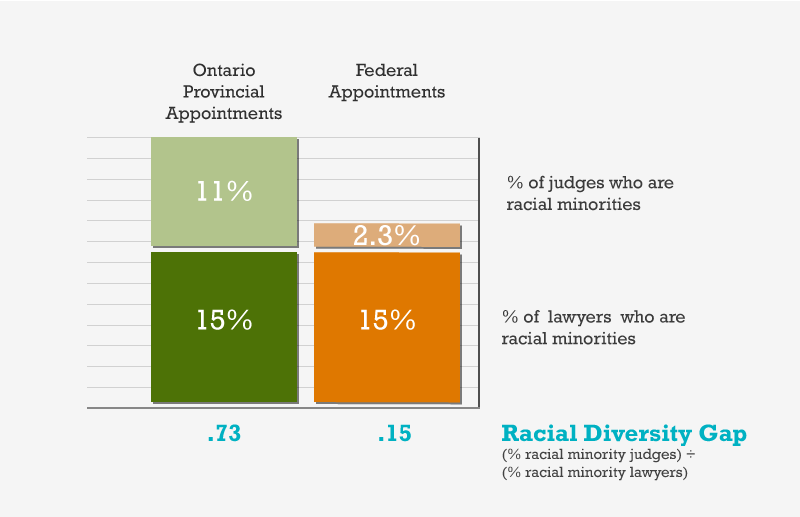|
Peter MacKay's comments last week suggest that diversity among Canada's judiciary is a non-issue for the federal government. From his response to the question posed by Arleen Huggins, president of the Canadian Association of Black Lawyers, it doesn't sound like he's even given consideration to the possibility that the appointment process may not be fair and equitable. So for him there is no reason to collect and analyze data. There are two main reasons why diversity data is important in a society in which gender and racial inequalities persist. The first reason is that data helps determine whether hiring or promotion policies and practices are fair and equitable. In other words, are we hiring and promoting the best and brightest? The second reason to collect data is to assess whether the organization reflects the diversity of the population served. This is important because it affects the types of services delivered, how they are delivered, and in the case of judges, the decisions made.
I think that Canadians would agree that we want the best and brightest lawyers to move into the judiciary. I would also argue that if the federal government is selecting judges primarily from a small pool of lawyers, namely White men, then we can't be hiring the best and the brightest. To get the best judges, the government needs to do more to ensure that all eligible lawyers feel welcomed to apply. If they don't think the process is fair or think it is biased against them, they might not see the point of applying. The government also needs to be sure that it is considering all applicants based on their knowledge, skills and qualifications - not personal characteristics such as race and gender or personal relationships with those making the selection decisions. I also think that Canadians want a judiciary that reflects the diversity of the Canadian population - this would result in decisions that better reflect an understanding of this diversity. The various dimensions of diversity that a person brings to the judiciary affects their decisions and leads to a more just society for all. A recent study from the United States found that male judges with daughters are more likely to rule in favour of women's rights than those without daughters. Clearly their understanding of women's issues, through their relationships with their daughters, is reflected in their decisions as a judge. (The report didn't investigate any difference between how male and female judges rule on women's issues.) As such, the varying perspectives that diversity gives a judge is reflected in their understanding of the issues before them in the courtroom and on their decisions. Without the data on how racial minorities and women fare in the hiring process, the argument often is that there is no evidence that there is a problem. Some also argue that low representation reflects the lack of qualified people or the lack of interest in the position. Without an examination of the diversity gap, it is easy to hide behind the argument that "the problem is them, not us." When we look at the data we do have, as reported in the Toronto Star, the analysis does show that there is a racial diversity gap when we compare the representation of racial minorities among judges to their representation among lawyers, at least in Ontario. Using the federal government's own method for analyzing whether this is an equity-related problem, this gives us a Racial Diversity Gap (or severity ratio) of .15 for federally appointed judges and .73 for provincially appointed judges. The government's own documents suggest that anything less than .80 is significant and requires that further analysis be conducted to investigate where the problem exists and goals be established to address the underlying issues and close the gap in representation. Sometimes this investigation does find that applications from certain groups of people are low. But the Canadian Human Rights Commission says that this doesn't let the employer off the hook. The perception that the workplace is hostile or unwelcoming, or that the process is unfair, are issues that the employer needs to address. But to get to the point of collecting and analyzing diversity data among federally appointed judges, the Government of Canada, specifically the Minister of Justice, Peter McKay - needs to answer one fundamental question: does diversity among the country's judiciary matter? If Peter MacKay doesn't think that having the best and brightest judges or having a judiciary that reflects and understands the diversity of the Canadian population are important, he should say so. If he thinks either of these are important, he should collect and release the data.
0 Comments
Your comment will be posted after it is approved.
Leave a Reply. |
TANA TURNERTana Turner is Principal of Turner Consulting Group Inc. She has over 30+ years of experience in the area of equity, diversity and inclusion. Categories
All
|

